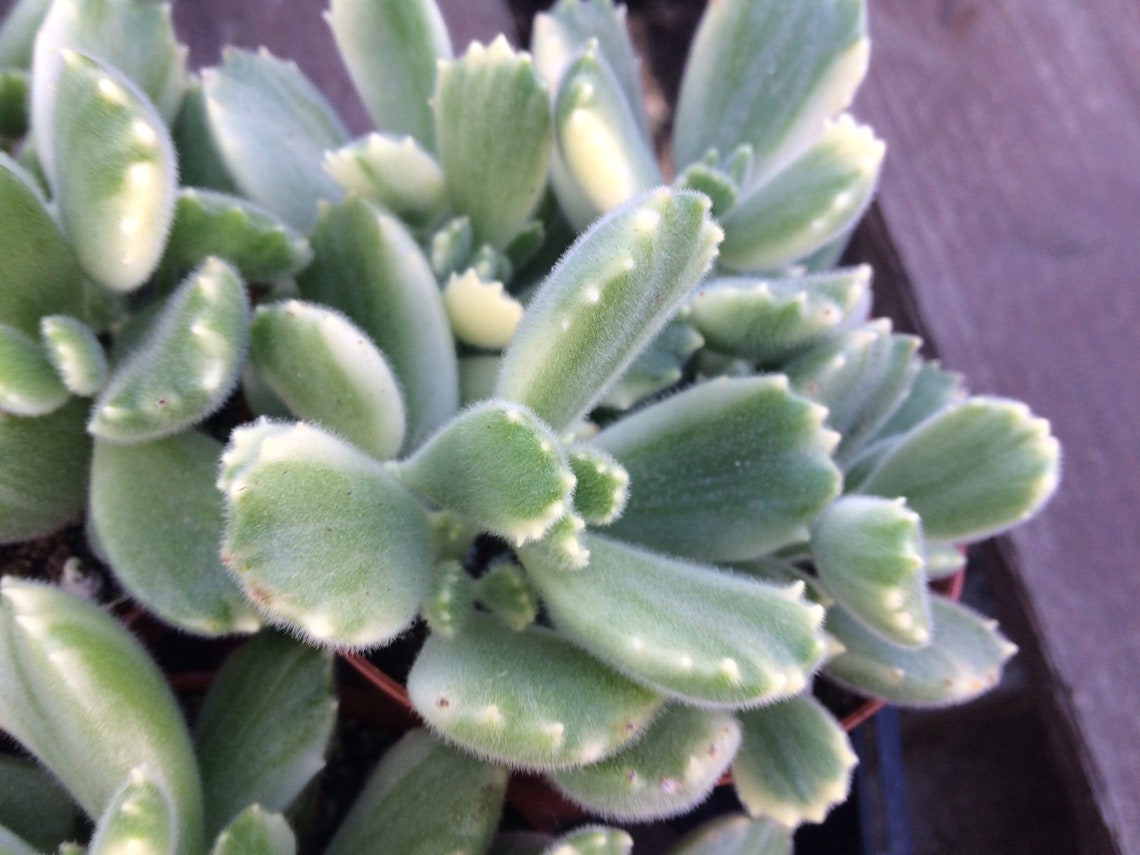


This plant is not cold hardy and is summer dormant. The basic guidelines for proper bear’s paw succulent care are the following: Only water it when the soil is completely dry. After watering, you may lightly fertilize with phosphorous heavy food to encourage blooms. If your temperatures allow it to grow outside through winter, water in early spring. The happy, properly positioned bear claw may produce large, orange, bell-shaped flowers during spring. You can judge after you’ve located your plant. Most growers recommend six hours of bright indirect light. Of course, this depends on the time of year and geographical location.Īfternoon sun in more southern areas may be too much for the plant, causing leaves to drop.
Bear paw succulent cats full#
Some recommend a full sunspot, but most advise no more than acclimating to morning sun. Place the plant into a brightly lit situation indoors and outside. Overwatering is the primary cause of succulent demise. Meet the bear paw succulent This adorable succulent is quite a bit like the panda plant succulent, whose leaves look like gray panda paws. Those located in more sun will need watering more often, but it needs to be spread out more than the watering of non-succulent ornamentals. While watering is beneficial to most succulents, too much of it is not a good thing. Use soil amendments like pumice, coarse sand, and pebbles. Grow the bear paw in a well-draining gritty mix. Thus, their capability to hold water in the leaves for future watering means many are acclimated to consistently dry soil. Many succulents originated in dry areas where rainfall is rare. Too much water around plant roots can lead to root rot. Soil is important to succulents, as keeping the water from settling on the roots. General Care for Cotyledon tomentosa Bears Paw Bears Paw is an adorable succulent that is easy to care for. Start off by planting it in the right soil. If this is your first succulent growing experience or if you’re new to growing them, benefit by learning the basics with bear paw succulent care. This is good advice for watering all succulents. The main thing is to water at the roots and avoid getting foliage wet when possible. Succulent plants with fuzzy leaves are not hard to grow, as many assume. You’ll likely see the term associated with other botanical plant names. In botanical terms, tomentosa means covered with short, dense, matted hairs or covered with fuzz. The succulent bear paw is an indoor plant recommended for those new to growing plants inside. It is small and fragile, with leaves becoming chubbier with the amount of water they hold. The dark red appears when the plant is mildly stressed and makes the shape stand out, drawing attention to the attractive shrub-like plant. This succulent is also known by the common names bear’s claw plant, bear’s paw succulent, bear paw cactus, and kitten paw plant. With dark red edges, the fuzzy foliage of the bear paw ( Cotyledon tomentosa) is squat and chubby with upper tips that resemble an animal’s foot or paw. In it’s native habitat, the plant grows in rocky fields and on steep cliffs where the porous soil gives them excellent drainage. If you’re new to growing succulents, you may want to try your hand at the bear paw succulent.


 0 kommentar(er)
0 kommentar(er)
